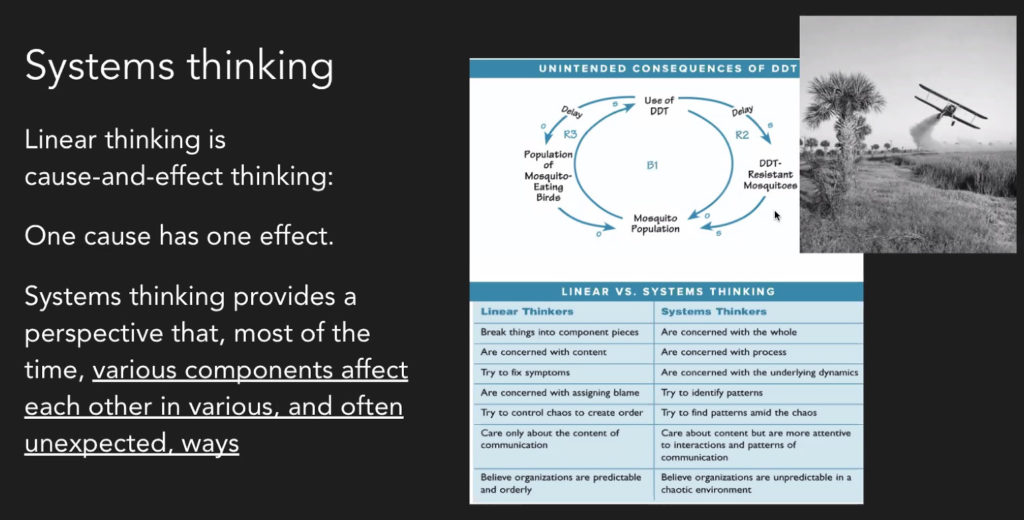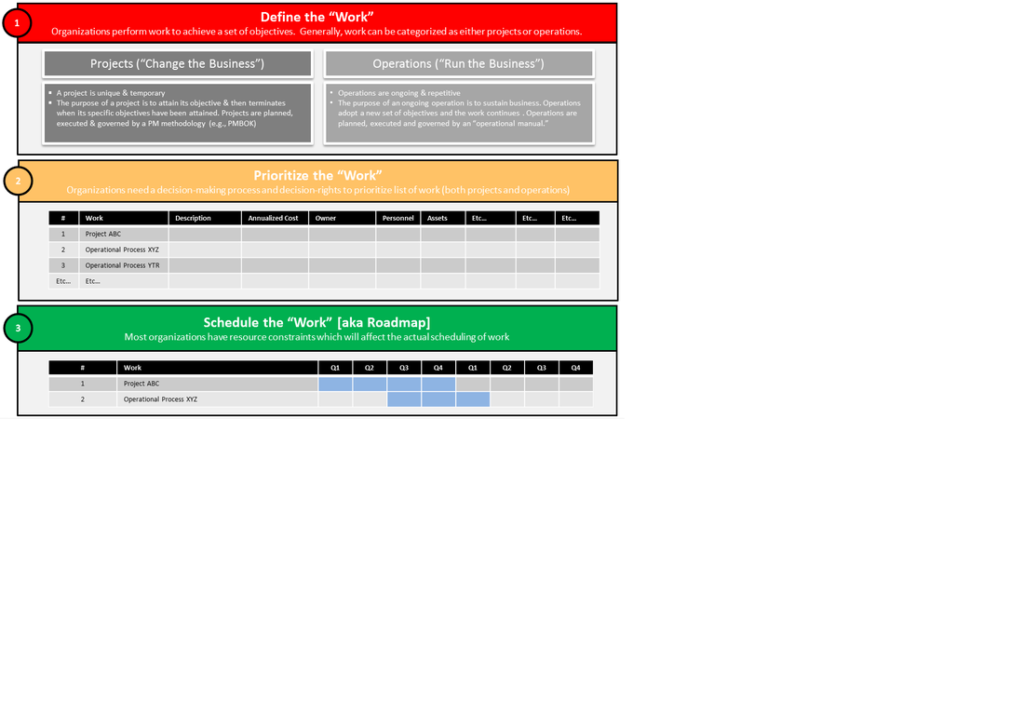
October 20, 2020

Enterprise Architecture is a specific form of the more general Systems Thinking approach that is resurfacing as a modern approach to problem solving. Source: October 19, 2020 Product Management Webinarhttps://www.eventbrite.com/e/systems-thinking-in-product-management-w-former-linkedin-pm-tickets-123377018985
Read More →November 22, 2018
Over the next few weeks I’ll be working through the MOOC titled, “UX Design Fundamentals.” It is the second course in the UI/UX Design Specialization, following “Visual Elements of User Interface Design.” The course is advertised as a hands-on course which examines “how content is organized and structured to create an experience for a user, and what role the designer plays in creating and shaping a user’s experience.” It highlights...
Read More →August 30, 2013
Today’s business climate is defined by constant change and increasing competitive pressures. As companies strive to maximize growth and profit margins, they face more demanding customers, new regulations, globalization, digitization, and the disruptive effects of the newest advancements in technology. There is relentless pressure to streamline processes, sustain profitability, drive inventory, create innovative sales and marketing programs, and share information in real-time. All of these critical factors are changing the...
Read More →June 23, 2013
1. The original Zachman framework, The Information Systems Architecture - A Framework, was created in which year?a. 1971b. 1984c. 1987d. 19992. The 2011 edition of the Zachman Framework is now defined as which of the following?a. An Enterprise Ontologyb. An Business Architecturec. A Business-Oriented Architectured. A Business-Oriented Framework3. Which of the following best describes the benefit of EA artifacts?a. EA artifacts help business stakeholders better understand the components of a...
Read More →March 3, 2013
re: http://briefingsdirect.blogspot.mx/2013/03/the-open-group-panel-explains-how.htmlre: http://www.opengroup.org/newportbeach2013An interesting discussion re: “the ArchiMate Modeling Language and The Open Group Architecture Framework Impact Such Trends as Big Data and Cloud.” Some notable quotes and my comments are below.Quote: “…role of enterprise and business architecture in helping enterprises exploit and manage technology and business transformation.”Comment: Enterprise architecture includes business architecture. Hence, there’s no need to point out both in this snippet. I prefer“enable” to “exploit.” Architecture is about...
Read More →March 3, 2013

My experience in implementing TOGAF in a variety of firms, has led me to conclude that to be successful in "developing" an EA capability within an organization requires organizing TOGAF's 10 Architecture Development Methodology (ADM) Phases into Super-Phases or "Stages" since each requires a unique set of skills, experience and firm-specific knowledge. Stage 1: “ENTERPRISE ARCHITECTURE PLANNING”The Preliminary and Architecture Vision phases could be considered “Enterprise Architecture Planning” for an...
Read More →March 1, 2013

The "Business Objectives to Roadmap" Cascade helps organizations visualize the links between the 2 concepts. First, the organization "defines the work to be done based on its objectives. This results in "work" which can be governed via "projects' or "operations." Projects are unique and temporary in nature (i.e., there is a beginning and an end). The purpose of a project is to attain its objective & thenterminates when its specific...
Read More →May 18, 2012
The value of Enterprise Architecture is that its utility does not diminish with the relentless evolution of information technology. Indeed, it provides an indispensable framework in which to analyze a wide-variety of information-oriented processing systems. For example, let’s leverage a modified, 5-domain enterprise architectural framework to highlight the tradeoffs associated with using the cloud for a business application. Let’s assume that we’re considering a SaaS deployment model for a personal...
Read More →May 15, 2012
Today’s New York Times article, Macy's Regroups in Warehouse Wars, is an excellent example of the integration of business strategy, technology, information technology and ultimately Enterprise Architecture.From a business strategy standpoint the key issue for Macy’s is how does it compete with Amazon.com’s uber efficient distribution system? A key strategic insight, from the chief stores officer Peter Sachse: "We've spent the last 153 years building warehouses. "We just called them...
Read More →May 13, 2012
In a previous post, I suggested that a business should evalute "shocks" to its architecture. So what “shocks” can a business expect in the future? Thomas Friedman’s, The World Is Flat: A Brief History of the Twenty-First Century analyzes the history of globalization and presents ten “flatteners” which suggests that the world is increasingly a level playing field in terms of commerce. Many, if not all of these 10 themes, are rooted in information technology or...
Read More →